Name John Whitney | Siblings Joan Whitney Payson | |
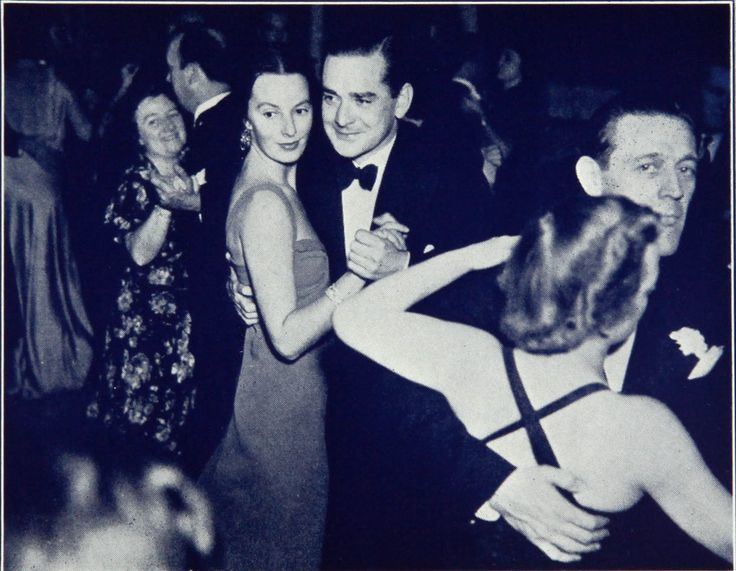 | ||
Parents Payne Whitney, Helen Hay Whitney Similar People Betsey Cushing Roosevel, Payne Whitney, Helen Hay Whitney, Harvey Cushing, Joan Whitney Payson | ||
John Hay Whitney (August 17, 1904 – February 8, 1982), colloquially known as Jock Whitney, was U.S. Ambassador to the United Kingdom, publisher of the New York Herald Tribune, and president of the Museum of Modern Art. He was a member of the Whitney family.
Contents
- Early life
- Business career
- Theatre and motion pictures
- Military career
- Thoroughbred horse racing
- Political life
- Personal life
- Philanthropy
- Museum of Modern Art
- Art collection
- Anecdotes
- References
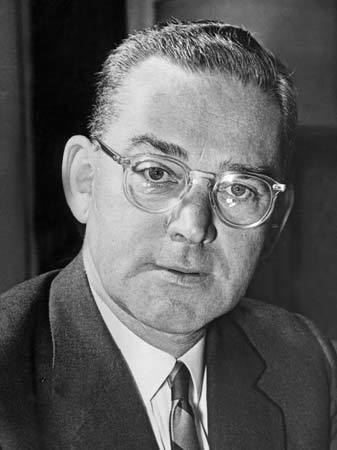
Early life

Whitney was born on August 17, 1904, in Ellsworth, Maine, Whitney was a descendant of John Whitney, a Puritan who settled in Massachusetts in 1635, as well as of William Bradford, who came over on the Mayflower. His father was Payne Whitney, and his grandfathers were William C. Whitney and John Hay, both presidential cabinet members. His mother was Helen Hay Whitney.
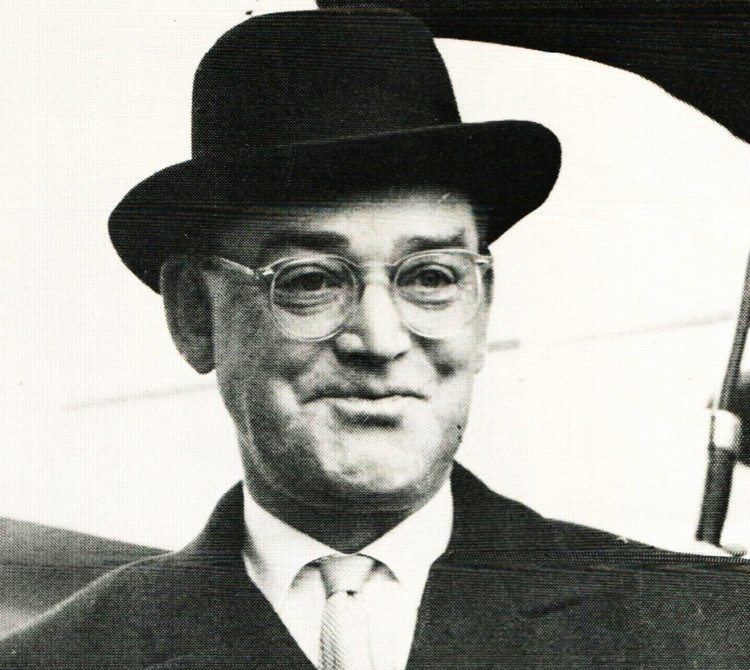
The Whitneys' family mansion, Payne Whitney House on New York's Fifth Avenue, was around the corner from James B. Duke House, home of the founder of the American Tobacco Co. Whitney's uncle, Oliver Hazard Payne, a business partner of John D. Rockefeller, arranged the funding for Duke to buy out his competitors.
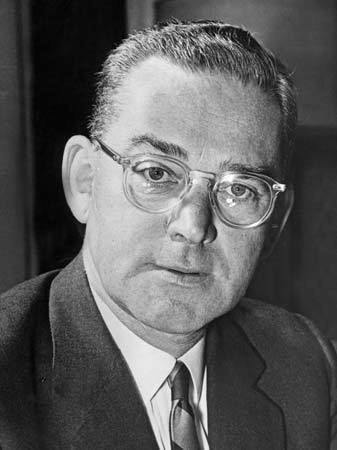
Jock Whitney attended Groton School, then Yale College. He joined Delta Kappa Epsilon fraternity (Phi chapter), as his father had. Whitney, his father, grandfather, and great-uncle were oarsmen at Yale, and his father was captain of the crew in 1898. He was a member of Scroll and Key. While at Yale, he reputedly coined the term "crew cut" for the haircut that now bears the name. After graduating in 1926, Whitney went to Oxford University, but the death of his father necessitated his returning home. He inherited a trust fund of $20 million (approximately $210 million in 2005 dollars), and later inherited four times that amount from his mother.
Business career

In 1929, Whitney was hired as a clerk at the firm of Lee, Higginson, where he met Langbourne Meade Williams, Jr., the son of the founder of Freeport Texas Co., a sulfur mining company. Williams enlisted his aid in ousting the chairman of his family's company by buying shares of the company. Whitney soon was Freeport's biggest shareholder, enabling Williams to sack the chairman and his management team. Williams became Freeport's president in 1933 and Whitney was appointed Chairman of the Board.
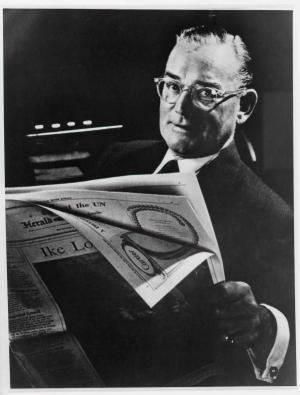
In 1946, Whitney founded J.H. Whitney & Company, the oldest venture capital firm in the U.S., with Benno C. Schmidt, Sr., who coined the term "venture capital." Whitney put up $10 million to finance entrepreneurs with business plans who were unwelcome at banks. In 1958, while he was still ambassador to the United Kingdom, his company Whitney Communications Corp. bought the New York Herald Tribune, and was its publisher from 1961 to its closure in 1966. Whitney Communications also owned and operated other newspapers, plus magazines and broadcasting stations.
Theatre and motion pictures
Whitney invested in several Broadway shows, including Peter Arno's 1931 revue Here Goes the Bride, a failure that cost him $100,000, but was more successful as one of the backers of Life with Father.
An October 1934 Fortune article on the Technicolor Corporation noted Whitney's interest in pictures. He had met Technicolor head Herbert Kalmus at the Saratoga Race Course. In 1932, Technicolor achieved a breakthrough with its three-strip process. Merian C. Cooper of RKO Radio Pictures approached Whitney with the idea of investing in Technicolor. They joined forces and founded Pioneer Pictures in 1933, with a distribution deal with RKO to distribute Pioneer's films. Whitney and his cousin Cornelius Vanderbilt Whitney bought a 15% stake in Technicolor.
Whitney was also the major investor in David O. Selznick's production company Selznick International Pictures, putting up $870,000 and serving as Chairman of the Board. He put up half the money to option Margaret Mitchell's Gone with the Wind for the Selznick film version, in which he then invested, and later in Rebecca (1940).
Military career
Whitney served in the United States Army Air Forces as an intelligence officer during World War II, assigned to the Office of Strategic Services. He was taken prisoner by the Germans in southern France, but escaped when the train transporting him to a POW camp came under Allied fire.
Thoroughbred horse racing
Whitney inherited his family's love of horses, a predilection he shared with his sister, Joan Whitney Payson. Jock and his sister ran Greentree Stables in the U.S., owned by their mother. In 1928, he became the youngest member ever elected to The Jockey Club.
Whitney and his first wife "Liz" raced horses both in the United States and in Europe. He owned Easter Hero who won the 1929 and 1930 editions of the Cheltenham Gold Cup. In the 1929 Grand National, his horse twisted a plate and was beaten by a nose at the finish. Although Whitney entered the Grand National annually, he never again came close to winning.
The Whitneys entered four horses in the Kentucky Derby in the 1930s, "Stepenfetchit," which finished 3rd in 1932, "Overtime," which finished 5th in 1933, "Singing Wood," which finished 8th in 1934, and "Heather Broom," which finished 3rd in 1939.
Jock Whitney was also an outstanding polo player, with a four-goal handicap, and it was as a sportsman that he made the cover of the March 27, 1933, issue of Time magazine.
In 2015, Whitney was posthumously inducted to the National Museum of Racing’s Hall of Fame as Pillar of the Turf.
Political life
Whitney was the major backer of Dwight D. Eisenhower. President Eisenhower appointed him United States Ambassador to the United Kingdom, a post held sixty years earlier by Whitney's grandfather John Hay. Whitney played a major role in improving Anglo-American relations, which had been severely strained during the 1956 Suez Crisis, when Eisenhower demanded that the British, French and Israelis terminate their invasion of Egypt.
Personal life
In 1930, Whitney purchased the Llangollen estate as a bridal gift for his fiancée, the Pennsylvania socialite Mary Elizabeth "Liz" Altemus. It was a 2,200-acre (890 ha) historic equestrian farm just outside Middleburg, Virginia. They were married on September 23, 1931. Although married to Altemus, Whitney was romantically linked to Tallulah Bankhead, Joan Bennett, Paulette Goddard and Joan Crawford. Clark Gable and Carole Lombard met at one of Whitney's parties. In the early 1930s, Jock Whitney began an affair with Nina Gore Vidal; at the same time Mary Altemus Whitney had an affair with Nina Vidal's husband Eugene Vidal. The couple divorced in 1940, but Liz Whitney remained at Llangollen for the rest of her life, becoming an internationally renowned horse breeder and a member of the Virginia Thoroughbred Association Hall of Fame.
In 1942, he married Betsey Cushing Roosevelt Whitney, ex-wife of James Roosevelt, son of Franklin D. Roosevelt, and adopted her two daughters:
Whitney met Fred Astaire in New York City while the former was a student at Yale University and they became lifelong friends, sharing a passion for horse racing. Whitney became a major investor in two of Astaire's Broadway stage vehicles, The Band Wagon (1930) and Gay Divorce (1932), and played a crucial role in securing for Astaire a contract with RKO Pictures in 1933, using his contacts with Merion C. Cooper - both men were board members of Pan American Airways whose planes were prominently featured in Astaire's breakthrough film with Ginger Rogers: Flying Down to Rio (1933).
During the 1970s, Whitney was listed as one of the ten wealthiest men in the world. The residences at his disposal over the years included an estate on Long Island; Greenwood Plantation in Georgia; a townhouse and an elegant apartment in Manhattan; a large summer house on Fishers Island, near New London, Connecticut; a 12-room house in Saratoga Springs, which the Whitneys used when they attended horse races; a golfing cottage in Augusta, Georgia, where he was a member of the Augusta National Golf Club; and a spacious house Cherry Hill in Virginia Water, Surrey, England, near the Ascot Racecourse. Mr. Whitney also owned an estate in Aiken, South Carolina, which he considered his 'retirement' home and where he hoped to spend his final days.
Whitney died on February 8, 1982 at North Shore Hospital, Manhasset, Long Island, after a long illness
Philanthropy
Payne Whitney made substantial gifts to Yale, to the New York Presbyterian Hospital, and the New York Public Library. After his father's death, the family built the Payne Whitney Gymnasium at Yale in his honor. The family also financed Payne Whitney Psychiatric Clinic at New York Presbyterian Hospital in 1932.
Whitney created the John Hay Whitney Foundation for educational projects in 1946. The Foundation provided fellowships to the racially and culturally deprived. He became a major contributor to Yale University, where he served as a Fellow of the Corporation.
In 1951, he and his wife Betsey Cushing Whitney donated land from their "Greentree" estate in Manhasset, New York toward the building of North Shore Hospital. Currently called North Shore University Hospital, it is the flagship hospital of the 3rd largest not-for-profit secular healthcare system in the United States, the North Shore-Long Island Jewish Health System.
In 1953, Whitney received The Hundred Year Association of New York's Gold Medal Award "in recognition of outstanding contributions to the City of New York."
In the late 1960s/early 1970's John Hay Whitney donated two small parcels of land in Manhasset to the County of Nassau and to the Manhasset-Lakeville Volunteer Fire Department. The Nassau County parcel was the new home for the 6th Police Precinct of the Nassau County Police, located at the S/E intersection of Community Drive and East Community Drive. Just east of the 6th pct, at 2 E Community Dr., the M-LFD parcel was the new home of Fire Company #2 of the M-LFD, where John Hay Whitney was voted in by the membership of Company number two as an Honorary Member of the Company.
Museum of Modern Art
In 1930 Whitney was elected to the Board of Trustees of the Museum of Modern Art in New York City, and named President of the MoMA Film Library in 1935. In 1941 he succeeded Nelson A. Rockefeller as President of MoMA. In 1946 he succeeded Stephen C. Clark as Chairman of the Board of Trustees
Art collection
When Whitney moved to England as United States Ambassador, he took a number of his favourite artworks with him to enjoy during his posting. Before his return to the US, he agreed for the first time to loan part of his his collection for the public to see. He provided the Tate Gallery with 56 paintings from the collection in England and specially brought in a further 11 paintings from the US. The exhibition, the John Hay Whitney Collection, ran from 16 December 1960 to 29 January 1961
In 1983 the National Gallery of Art, Washington held an exhibition of the John Hay Whitney Collection with paintings loaned by Whitney's wife, The Museum of Modern Art and Yale University Art Gallery
Among the paintings in his collection, Jock Whitney's prized possession was the Bal au moulin de la Galette painted in 1876 by the French artist Pierre-Auguste Renoir. In 1990, his widow put the painting up for auction with Sotheby's, New York and it sold for US$78 million to Japanese businessman, Ryoei Saito.
Whitney's widow donated a number of paintings from his collection to the Greentree Foundation. One of those paintings by Pablo Picasso, Garçon à la pipe was auctioned by Sotheby's in May 2004 for $104 million
The following works have been publicly exhibited or sold from the former collection of John Hay Whitney.
Sources: John Hay Whitney Collection (Catalogue), Tate Gallery, 1960, John Hay Whitney Collection (Catalogue), National Gallery of Art, 1983, Sotheby's Catalogue, auction 10 May 1999, Sotheby's Catalogue, auction 5 May 2004
Anecdotes
Whitney gave Fred Astaire a pair of big-wheel roller skates as a present. A few years later roller skating was one of his most important dance numbers on film.
Whitney and Jimmy Altemus provided the lyrics for a sing composed by Fred Astaire, "Tappin' the Time."
President Dwight D. Eisenhower took pains to transmit to Ambassador Whitney in London, by telegram, the first round golf scores of the Masters Tournament at the Augusta National Golf Club on 5 April 1957.
Ambassador Whitney had a very demanding and exhausting scheduled but was not fazed by it. After having been to three or four receptions one day, his wife was not surprised to find their chauffeur, groggy from his rounds, dozing on the back seat of their limousine and the Ambassador driving the car.
Whitney: "I have just had a heart attack and am on a very strict diet. However if you will twist my arm a little, I will probably give in and we will consume a number of very large dry martinis"
William S. Paley (the legendary founder of CBS), who was Whitney's brother in law, had a gentle rivalry with Whitney. Once while watching television with Whitney at Greentree, Paley wanted to change the channel. ‘Where’s your clicker?’ Paley asked, figuring Jock would have a remote-control switch at his fingertips. Jock calmly pressed a buzzer, and his butler walked up to the TV set to make the switch.
The White House Is Nice, But It's No Greentree! E. J. Kahn, Mr. Whitney's biographer, reported that one of his daughters, Kate, once took her own children on a tour of the White House. Mr. Kahn wrote, After inspecting it, they pronounced it nice enough but hardly on a par with Greentree. [His Long Island estate]
